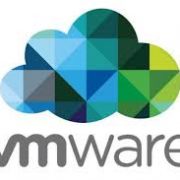Five Crucial Components of a Layered Security Strategy
Modern cyber threats are evolving at an alarming pace. Today’s thieves are constantly devising new tactics, angles, and technologies that can be used to victimize your customers—everything from malicious mobile apps to phishing emails and malware, and the consequences can be costly. Last year, the FBI estimated that criminals would net $1 billion in ransomware profits alone.
To truly ensure your customers are safe from these increasingly complex attacks, they need multiple defense layers to protect against every tactic at every attack stage. Here are a few essential layers that should be a part of any successful cyber security strategy.
Multi-Vector Protection
Cyber criminals are more organized and better educated than ever before. This means they’re increasingly savvy in implementing multistage, multi-vector attacks. Multi-vector protection ensures that your customers’’ endpoint security covers threats that cross multiple vectors, through multiple stages, reducing the opportunity for cyber criminals to successfully breach their networks.
Web Filtering
In many cases, by the reports made by this IT support company in London, the weakest links in a security strategy are the very same end users it’s intended to protect. In order to ensure end user behaviors don’t jeopardize the security of business networks, effective domain-level protection is a must. Using a cloud-based, web accessible security layer protects a TSP’s customers by reducing the flow of malware into the network by up to 90 percent. Plus, it gives TSPs granular control of all users’ internet activities, blocking dangerous websites automatically, and placing others under real time policy control.
End User Education
According to the Verizon Data Breach Investigations Report, phishing—a practice in which cyber criminals impersonate a legitimate company to steal personal information or login credentials—was behind 90 percent of security breaches in 2016. Plus, thanks to an increasingly mobile workforce, an organization’s data often leaves its secured network perimeters, creating a major vulnerability. For these reasons, implementing a recurring and continuously updated security education program is more important than ever to help end users remain current on increasingly sophisticated and realistic phishing attempts.
Patch Management
Patching ensures that your customers’’ systems are up-to-date making it more difficult for the majority of hackers to penetrate. Regularly scanning for vulnerabilities in your customers’ environments can help you determine if patches are necessary. It’s a low-cost practice that can dramatically improve security.
Backup
Backups are essential for remediating malicious activity and eliminating the effectiveness of ransomware. Having a regular backup in place also addresses concerns about whether your customers have ready access to the latest versions of their applications and data. This is critical for organizations that must meet certain compliance mandates such as HIPAA or PCI-DSS.
Webroot SecureAnywhere® solutions specialize in providing all the layers of security you need to protect your customers from complex, zero-hour cyber threats.
This article was provided by our service partner Webroot.







